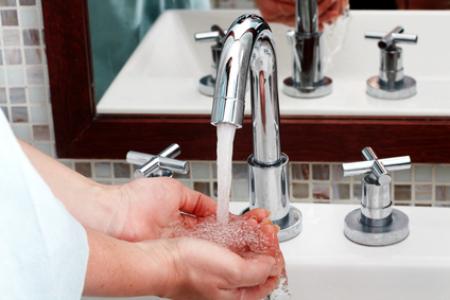Water Softeners - How Do They Work?

Hard, mineral-heavy water is a nuisance, to say the least. It can leave you with dry hair and itchy skin, cause your laundry to come out crunchy and faded, leave hard water spots on dishes and filmy limescale buildup all over your shower, and if all that wasn't bad enough, it can deal serious damage to your plumbing over time, too. The way forward is clear - if you're done dealing with hard water in your home, then it's time to start looking into water softeners.
But what exactly are water softeners - and how do they work? If this is your first time seriously looking into water softeners, those are probably the first two questions on your mind. If you want answers to those questions, read on:
Water Softeners: The Basic Components
Most typical water softeners consist of three primary parts:
- The softener tank, also known as a resin or mineral tank. This is a reservoir directly connected to the main supply line. This tank contains a bed of resin microbeads, through which the water flows - more on them in a moment.
- The brine tank. This is a shorter, wider tank connected to the softener tank by a fill tube. As the name implies, the brine tank holds briny water - usually salt water, though some systems use potassium chloride instead of salt.
- The head valve. This measures the water levels in the tank and controls the direction and flow rate at which water enters the tank. It's also responsible for controlling the system's regeneration cycle.
How It Works
A water softener uses what's known as an ion exchange process to pull molecules of hard minerals like calcium and magnesium out of the water. The resin beads in the softener tank are loaded with a strong negative ion charge from the sodium (or potassium). The mineral particles in hard water have a positive ion charge, and when they flow through the fill tank, they attach themselves to the resin beads, releasing the sodium/potassium ions in the process. The hard minerals stay behind in the resin tank, and the sodium or potassium ions flow out with the softened water.
Obviously, this process only works for so long before there are no more negative ions to attract the hard minerals. That's where the head valve comes in. After a certain length of time, or a certain amount of water, the head valve starts a regeneration cycle in which briny water is sent out into the resin tank through the fill tube. The briny water washes through the beads, and as it does so, it rinses away the positive hard mineral ions and "recharges" the resin with negative ions again, after which the mineral-heavy water is flushed out through a discharge hose.
The good news is that this process typically only takes 1-2 hours. The bad news is that unless you have a dual-tank system, the water softener can't be used during the regeneration cycle. Fortunately, this cycle is generally programmed to happen during times when water is least likely to be heavily consumed, such as late at night or in the very early hours of the morning.
Taking The Next Steps
Water softener systems are highly effective at removing nearly all hard mineral content from the water. They're also pretty easy to maintain, too: other than periodically replenishing the brine tank with water softener, water softeners don't need a ton of heavy hands-on work most of the time. If you want a simple, elegant, and reliable solution to your hard water issues, then a water softener system is a worthy investment.
Once you've decided on a system for your home, the next step is to call a plumbing company to install it. As Douglasville's premier plumbing company, New Era Plumbing, LLC excels at educating our clients on the best, cutting-edge water softeners, helping them choose the best system for their properties, and installing it to ensure that everything is set up properly. If you're ready to say "so long" to hard water, we're here to help. Call New Era Plumbing, LLC today to learn more about our water softeners at 404-629-9478.